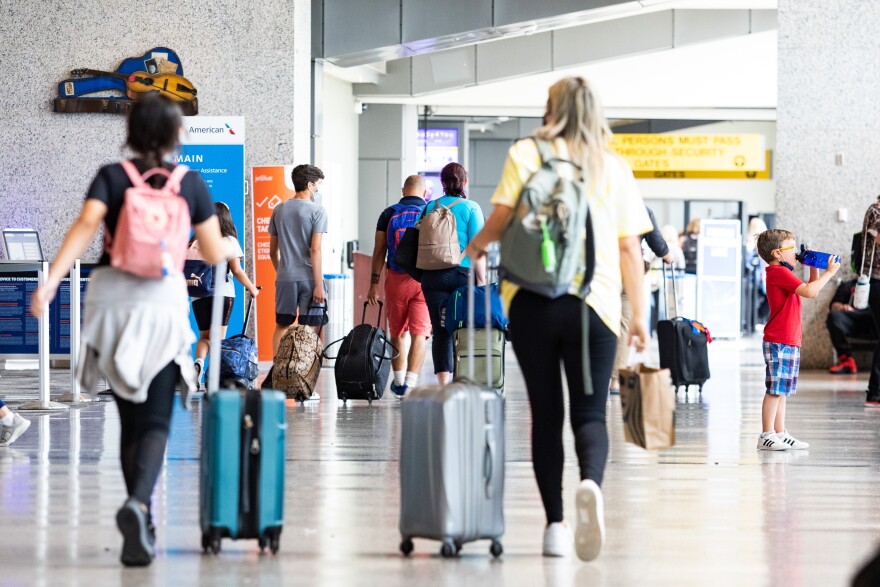Arrive early, breathe deeply and get in line. Austin-Bergstrom International Airport is about to get busier than ever.
Officials forecast a record-smashing 20 million passengers will travel through the city-owned facility this year, besting the previous high of 17.3 million passengers in 2019.
"The last few months have been incredibly busy," airport spokesperson Sam Haynes said. "People are ready to travel again."
The airport set new passenger records for November and December, the two most recent months for which data is publicly available. More than 1.5 million people traveled through the airport each of those months, including at the privately run South Terminal where Allegiant and Frontier operate.
The busiest month on record at ABIA remains remains July 2019 when 1.6 million passengers passed through.
But that high-altitude throughput could become the norm this year, given that the unprecedented forecast of 20 million passengers would average that each month.
Passenger traffic is taking off because airlines keep adding more flights. For example, Southwest — the largest carrier at ABIA by capacity — is adding nonstop service to six destinations early this year including to Amarillo, Midland, Charleston, S.C.; Columbus, Ohio; Ontario, Calif.; and Puerto Vallarta, Mexico.
More recently, Virgin Atlantic announced new nonstop service to Heathrow Airport in London starting May 25. American started nonstop service to more cities including Liberia, Costa Rica; Punta Cana, Dominican Republic; and Puerto Vallarta.
And that's just a slice of the newly added flights.
A significant chunk of the growth is happening at the South Terminal where Allegiant opened a new base of operations in November with 89 employees. The ultra-low-cost airline started service to nine airports including Amarillo International Airport, Sioux Falls Regional Airport and Palm Beach International Airport.
Bottom line: The number of seats available on flights out of Austin is expected to be up by 40% in April compared to April 2019.
The growth is so extreme in an airport built for 15 million annual travelers that the city's Department of Aviation is buying a third bus to move passengers forced to disembark on the airfield when all 34 gates at the Barbara Jordan Terminal are full.
Austin City Council on Thursday unanimously approved buying the $470,000, 132-passenger COBUS Industries bus using money generated by airport operations.
The buses are mostly used to unload diverted flights or charter flights, especially during busy periods like the Formula 1 Grand Prix or South by Southwest.
Austin leads the nation in accepting diverted flights because of its proximity to major airports in San Antonio, Houston and Dallas-Fort Worth, officials said.
The airport accepted 574 diversions in 2019 and 432 in 2021, a growing challenge considering the increased demand for gate access as airlines keep stacking flights to Austin.
In response to the stronger-than-expected rebound from a pandemic slump when passenger volumes nosedived by more than 96%, ABIA CEO Jacqueline Yaft is accelerating development plans for the 4,242-acre facility.
Among the more urgent of the 60-plus projects that make up the largest expansion in Austin-Bergstrom International Airport history, officials plan to add three new gates on the west side of the Barbara Jordan Terminal.
City Council last month approved a $46 million contract with JE Dunn/Clark for preconstruction and design work on that project.
"We've been trying to catch up to the demand for some time now," Haynes said. "That's definitely why we're focusing on bringing more capacity to the terminal as soon as we can."










